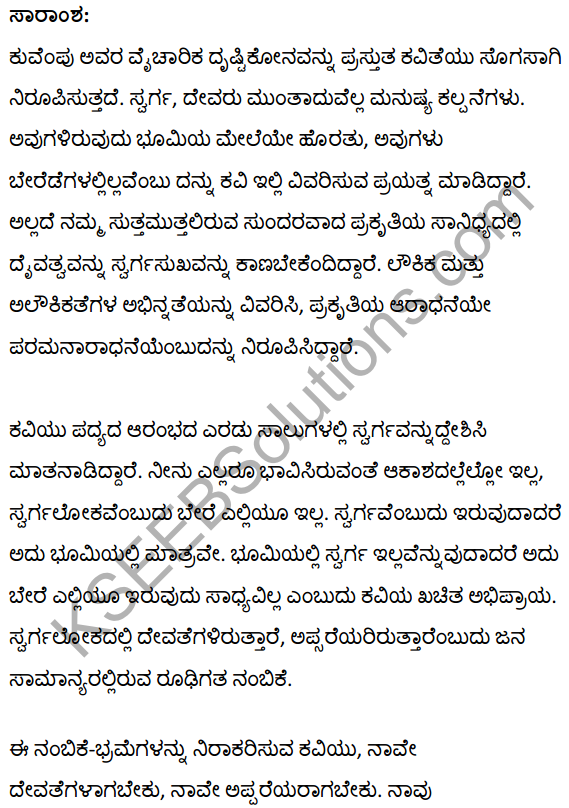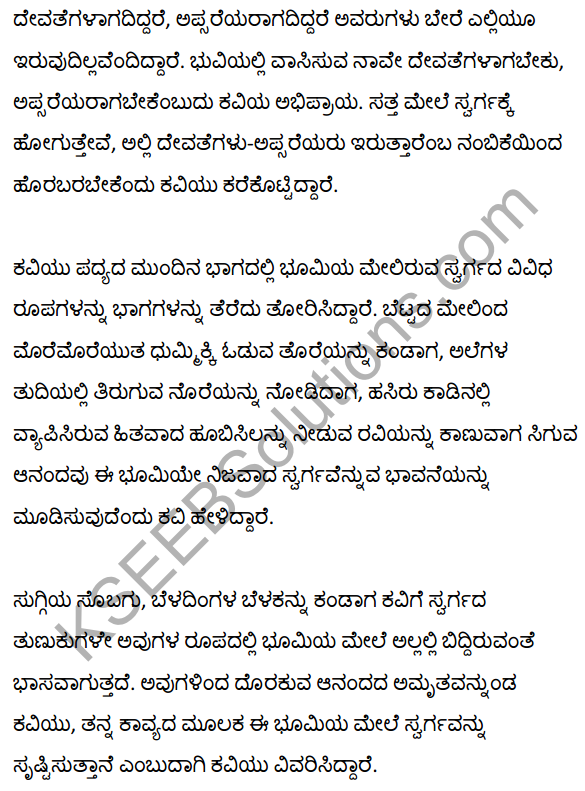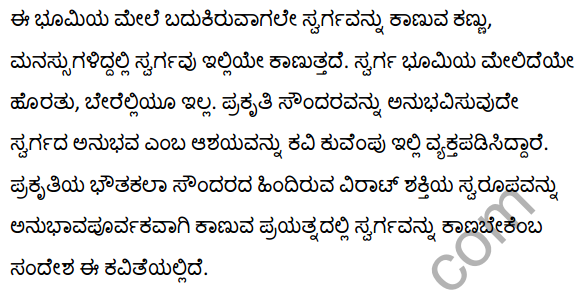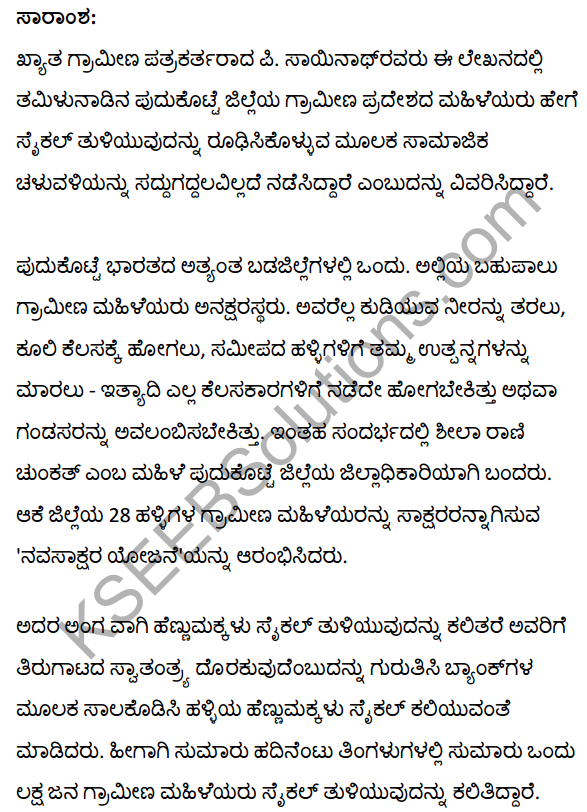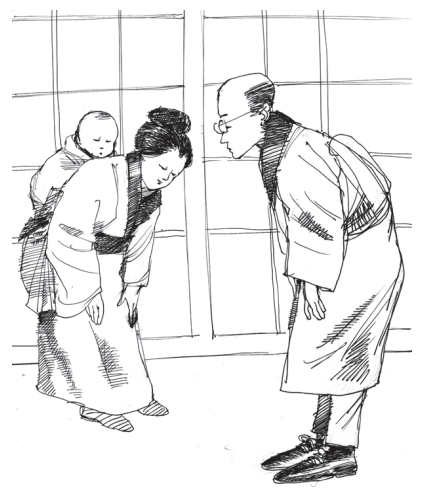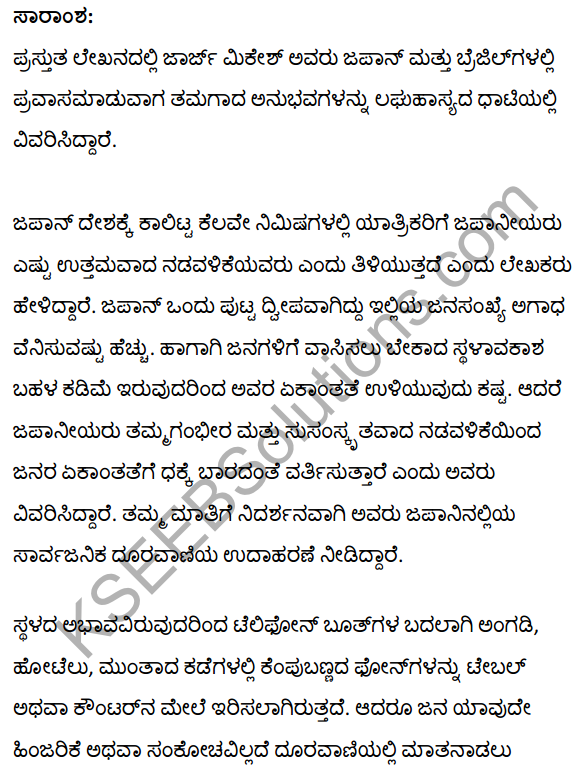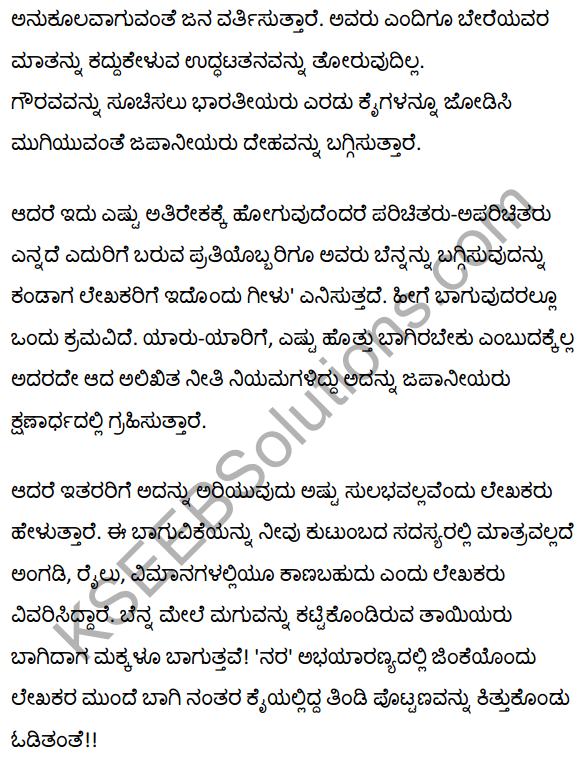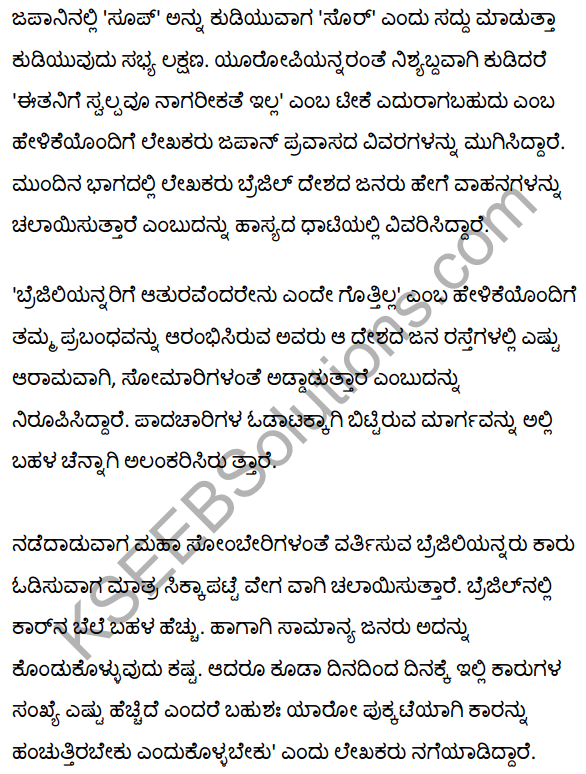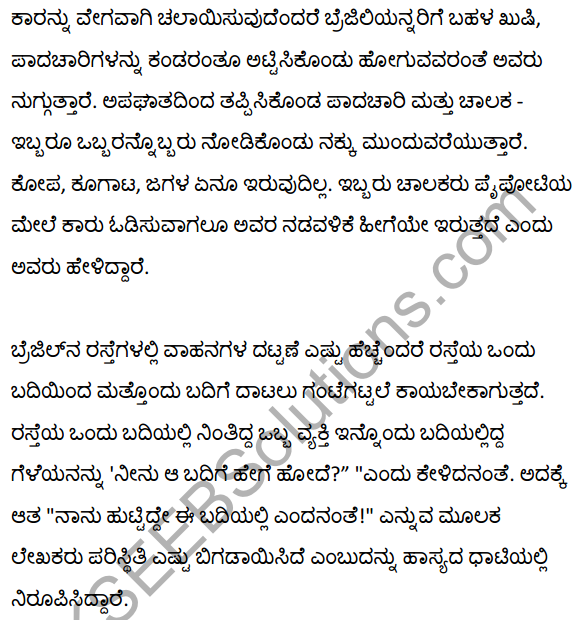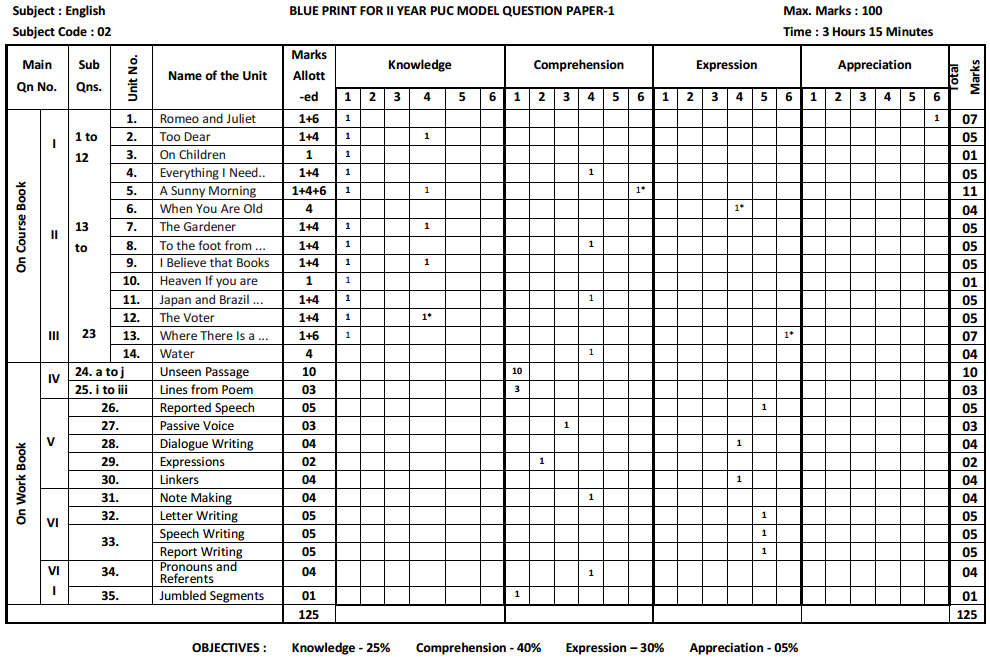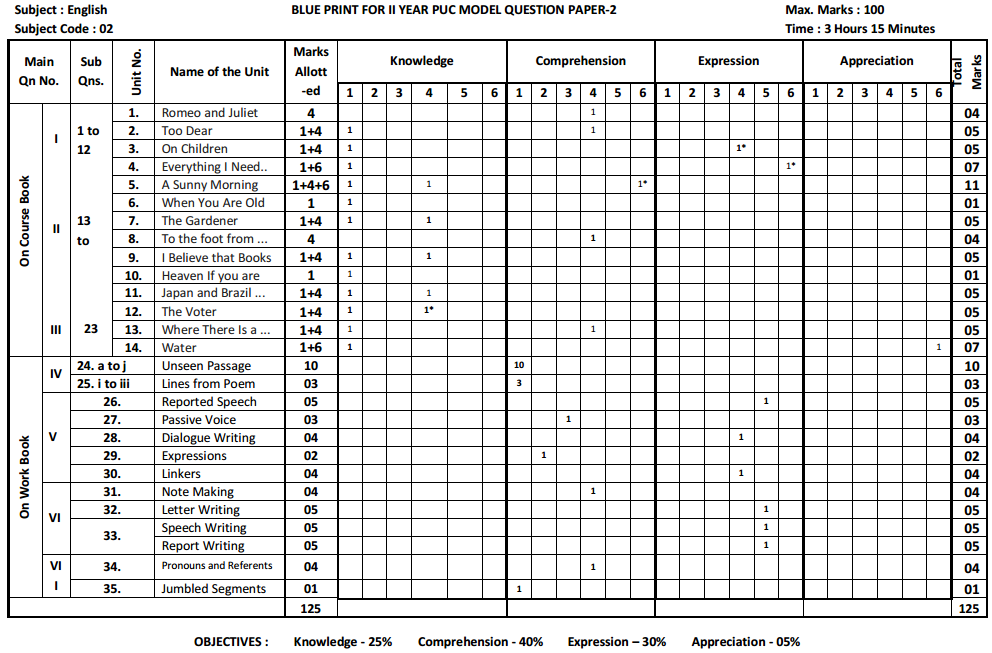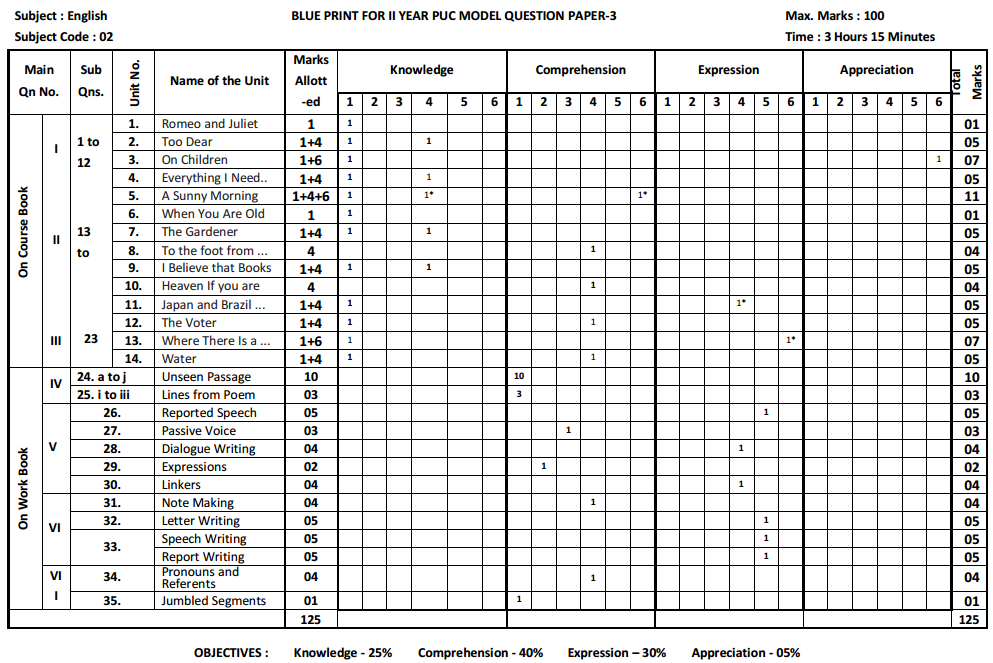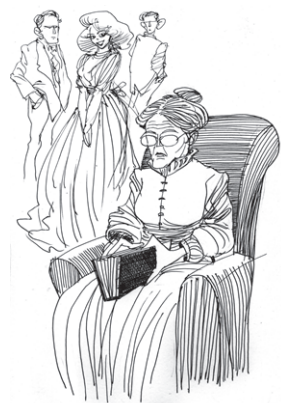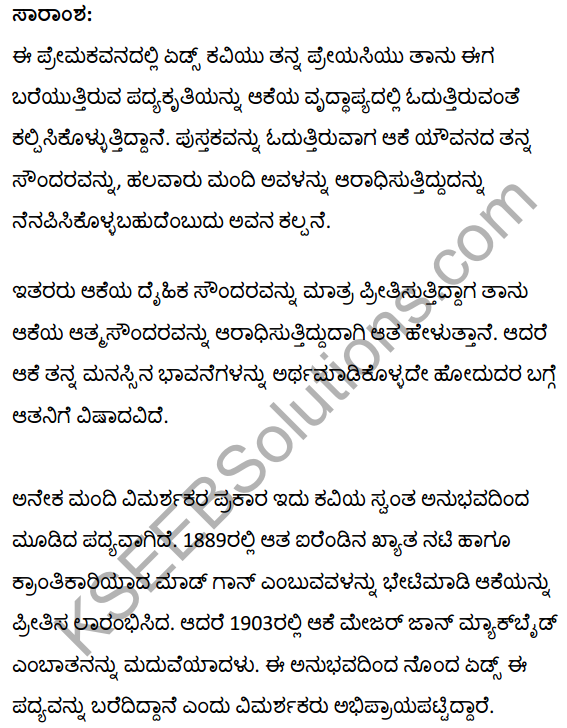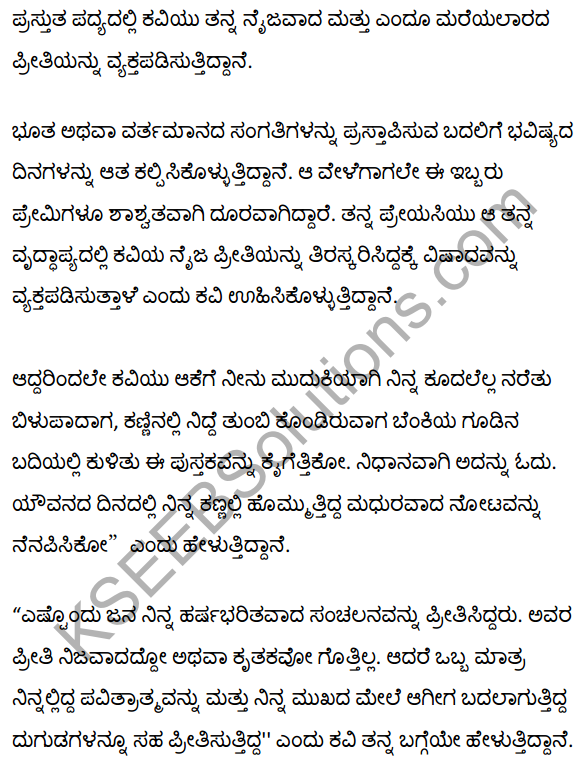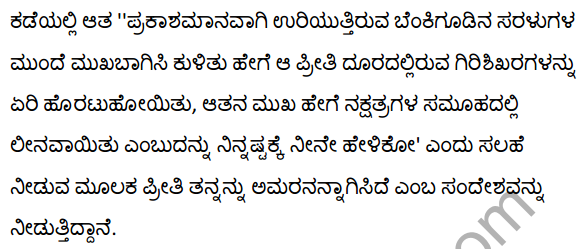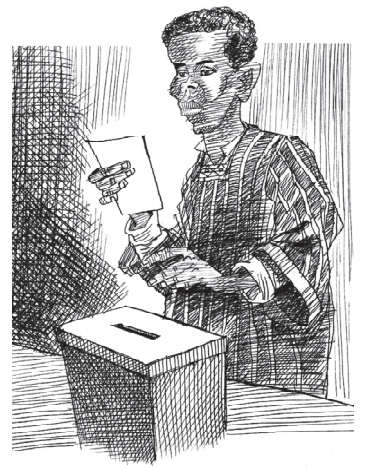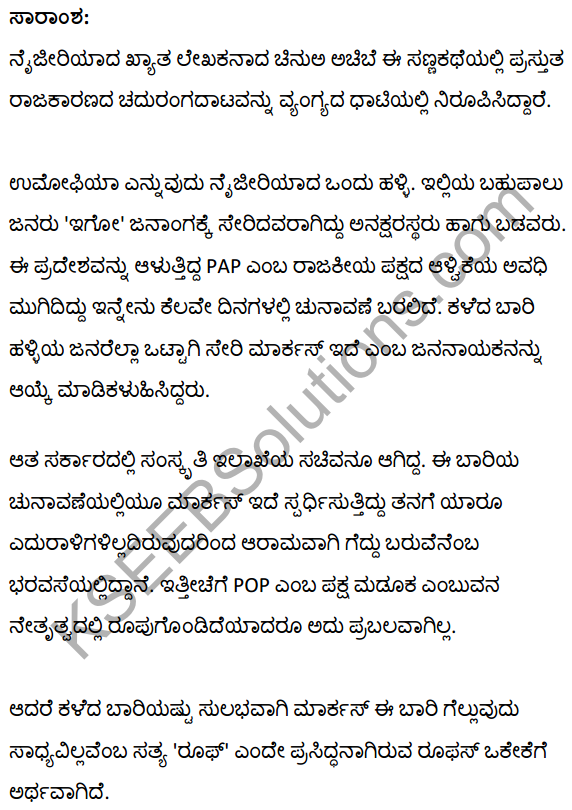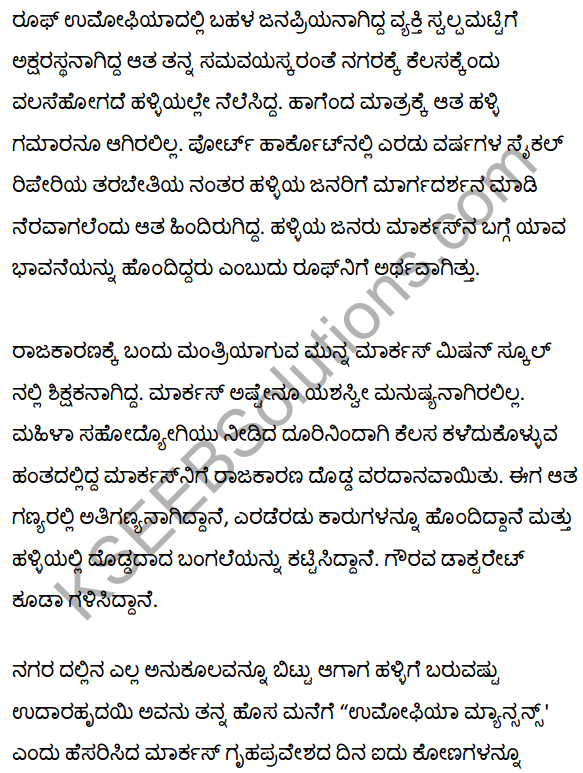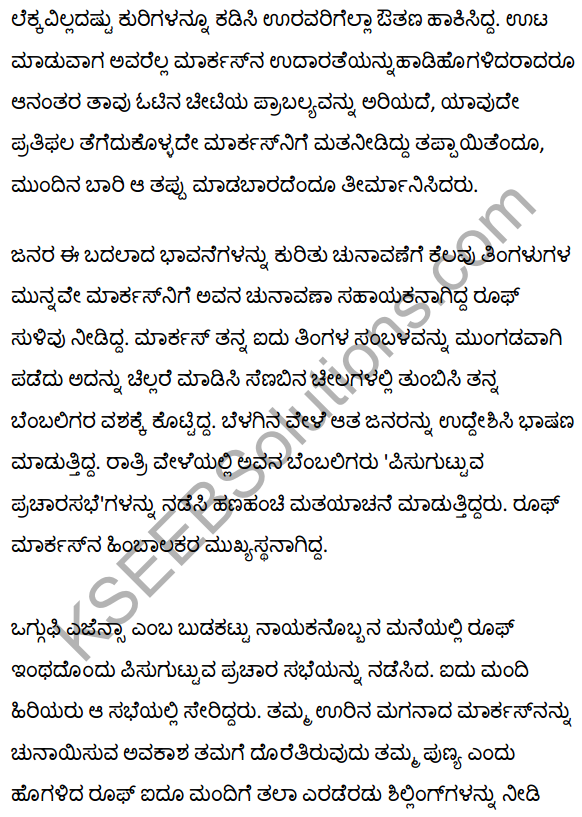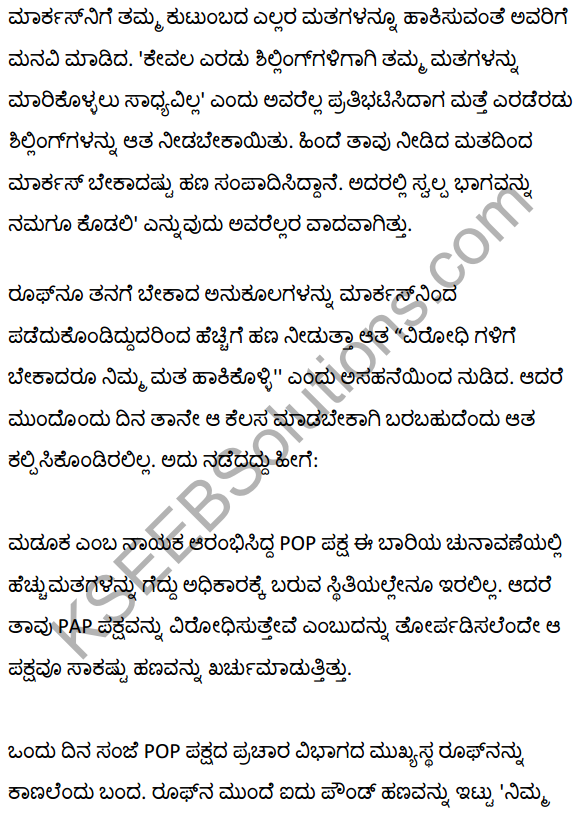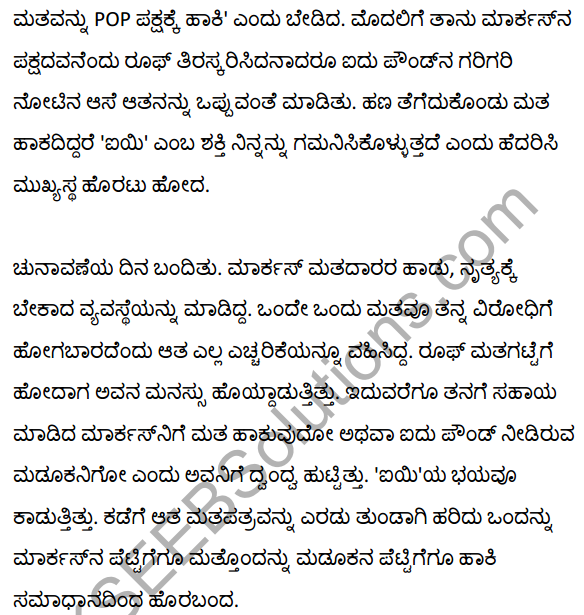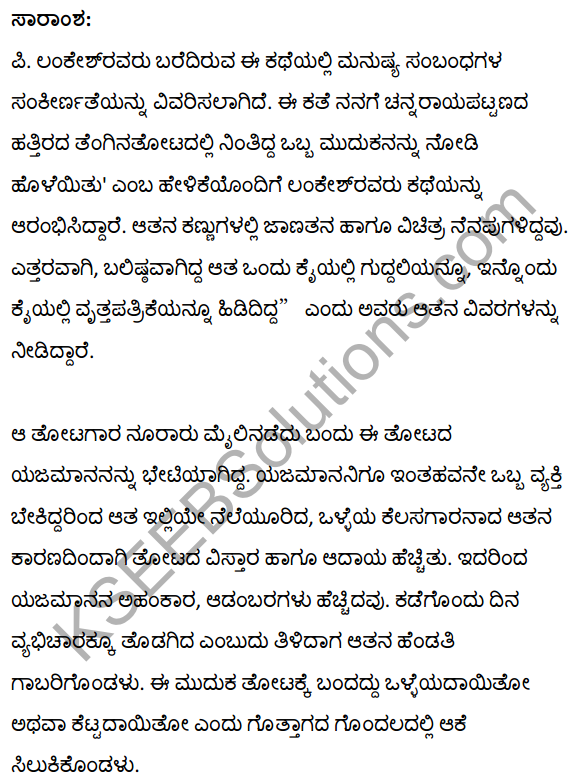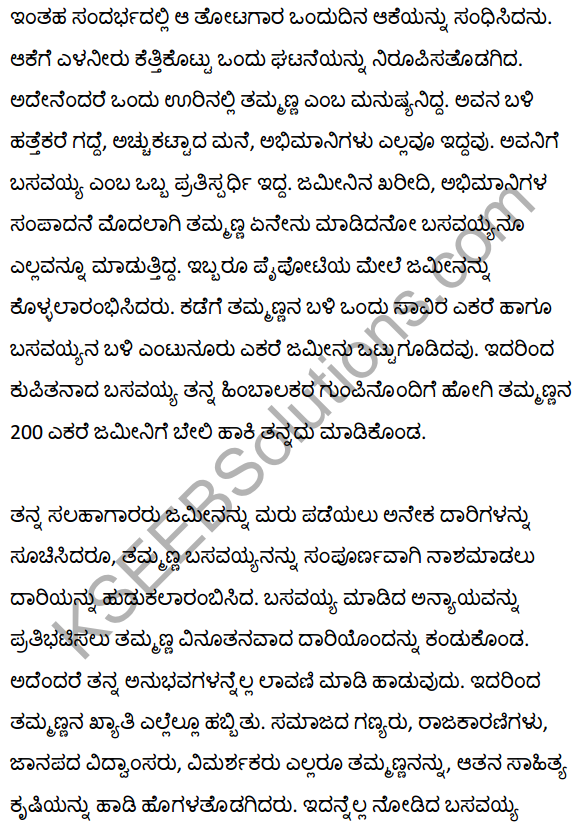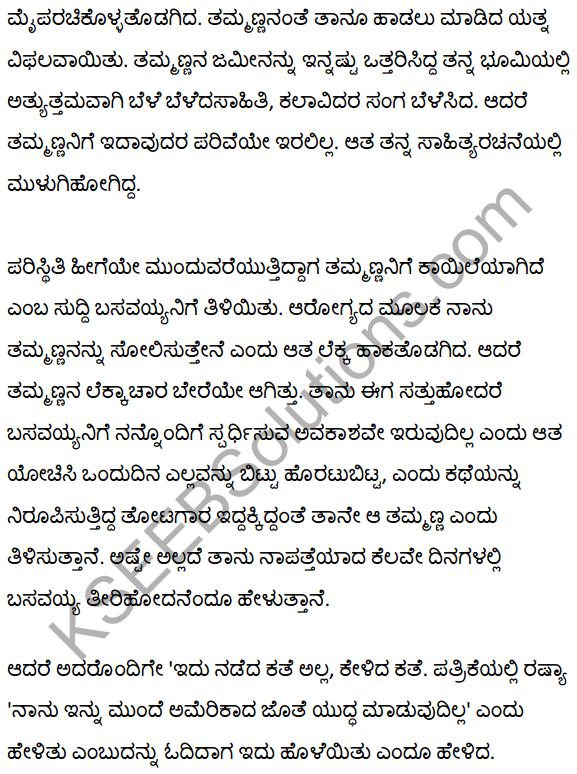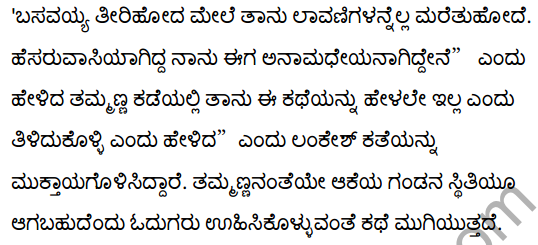Karnataka 2nd PUC Sociology Question Bank Chapter 3 Inclusive Strategies
You can Download Chapter 3 Inclusive Strategies Questions and Answers, Notes, 2nd PUC Sociology Question Bank with Answers Karnataka State Board Solutions help you to revise complete Syllabus and score more marks in your examinations.
2nd PUC Sociology Inclusive Strategies One Mark Questions and Answers
Question 1.
Which Article of the Indian Constitution abolishes untouchability?
Answer:
Article 17.
Question 2.
In which year the untouchability (Offences) Act was enacted?
Answer:
1955.
Question 3.
In which year the Programe Stree Shakhti was launched?
Answer:
2000-2001.
Question 4.
Who introduced the concept of Micro Finance in Bangladesh?
Answer:
Muhammad Yunus.
Question 5.
Where is the Headquarters of Lijjat located?
Answer:
Mumbai.
![]()
Question 6.
Which non-governmental organization is working for Soligas?
Answer:
Vivekananda, Girijana Kendra.
Question 7.
Who started Harijana and young India Newspapers?
Answer:
Mahathama Gandhi.
Question 8.
Who started Mookanayak News Papers?
Answer:
Dr. B.R. Ambedkar.
Question 9.
Who founded Sulabh International?
Answer:
Dr. Bindeshwar Pathak.
Question 10.
What is gender discrimination?
Answer:
Discrimination against people based on their Gender.
Question 11.
In which year towards equality report was Submitted?
Answer:
1974.
Question 12.
Which year Government of India declared as year of women empowerment?
Answer:
2001.
Question 13.
Who coined affirmative Action?
Answer:
John. F. Kennedy.
Question 14.
Who started Harijana Sevaka Sangha?
Answer:
Mahathama Gandhi.
Question 15.
Who started Bahishkritha Hitha Karinisabha?
Answer:
Dr. B.R. Ambedkar.
Question 16.
Expand LAMPS.
Answer:
Large Area Multi Purpose Societies.
![]()
Question 17.
Expand TRIFED.
Answer:
Tribal Co-Operative Market Development Federation of India.
Question 18.
In which year protection of civil Rights Act was passed?
Answer:
1976. .
Question 19.
Expand NCW.
Answer:
National Commission for Women.
Question 20.
Expand SGH.
Answer:
Self – Help Groups.
Question 21.
Expand SEWA.
Answer:
SelfEmployed Women Association.
Question 22.
Expand SKDRDP.
Answer:
Shri Kshethra Dharmasthala Rural Development Project.
Question 23.
Expand SCP.
Answer:
Special Component Plan.
Question 24.
Expand SCA.
Answer:
Special Central Assistance.
Question 25.
Expand SCDC.
Answer:
Scheduled Caste Development Corporation.
Question 26.
Expand CIIL.
Answer:
Central Institute of Indian languages.
Question 27.
What is the provision of Article 335 of the constitution?
Answer:
Reservations to SCs and STs.
Question 28.
In which year national commission for women was established.
Answer:
1992.
![]()
Question 29.
Expand NABARD.
Answer:
National Bank for Agriculture and Rural Development.
2nd PUC Sociology Inclusive Strategies Two Marks Questions and Answers
Question 1.
Give the meaning of Affirmative action.
Answer:
Affirmative action refers to policies that take factors including “caste, creed, religion, or sex, into consideration, in order to benefit an underrepresented group in areas of employment, education, and business”.
Question 2.
Explain the concept of Women Empowerment.
Answer:
The dictionary meaning of the terms “empowerment” is to give power or authority. Hence empowerment is the act of giving power. Thus women’s empowerment is the act of empowering women i .e. to give them the power or authority. The term Empowerment has different meanings to women of different classes.
Question 3.
What is a self help group?
Answer:
“A Self-Help Group comprises a group of micro enterpreneurs having homogenous social and economic backgrounds, all voluntarily coming together to save regular small sums of money, mutually agreeing to contribute to a common fund and to meet their emergency needs on the basis of mutual help”.
Question 4.
What is micro finance?
Answer:
Micro Finance is defined as, financial services such as Saving A/c, Insurance Fund & credit provided to poor & low income clients so as to help them to rise their income & there by improve their standard of I living.
![]()
Question 5.
What is Stree Shakthi?
Answer:
The programme was launched during 2000-01 and it is being implemented throughout the state to empower rural women and make them self reliant is called as Stree Shakthi.
Question 6.
Mention any two objectives of stree shakhti.
Answer:
- To strengthen the process of economic development of rural women and create a conducive environment for social change.
- To form self help group based on thrift and credit principles which builds self reliance and enable women to have greater access and control over resources.
Question 7.
Mention the advantages of Internal lending in self help groups.
Answer:
Managing their own common fund, financing needs of each other develops their skills of financial management.
2nd PUC Sociology Inclusive Strategies Five Marks Questions and Answers
Question 1.
What were the provisions of the Untouchability Act 1955?
Answer:
The Untouchability (Offences) Act -1955. It provides penalties for the following offences.
- Preventing a person on grounds of untouchability, from entering a place of public worship, offering prayer therein or taking water from a tank, well or spring.
- Enforcing all kinds of social disabilities such as denying access to any shop, public
restaurant, public hospital or educational institutions, hotel or any other place of public entertainment, the use of any road, river, well, tank, water tap, cremation ground, sanitary convenience and Dharmashalas.’ - Enforcing occupational, professional or trade disabilities in the matter or enjoyment of any benefit under the charitable trust in the construction or occupation of any residential premises in any locality or the observance of any social or religious usages or ceremony.
- Refusing to sell goods or render services to an untouchable.
![]()
Question 2.
Briefly explain the role of NGOs for upliftment of SCs/STs.
Answer:
Non-Governmental. Organizations have played a vital role in welfare of Scheduled Castes. The important ones are (1) Harijan Sevak Sangh, (2) Indian Depressed Classes League, (3) Hindi Sweepers Sevak Sangh, (4) Servants India Society, (5) Ishwar Saran Ashram, (6) All India Backward Classes Federation, (7) Bharatiya Adimajati Sevak Sangh, Vanarasikalayana Sabha, Sri Ramakrishna Mission etc., have also made efforts to eradicate untouchability.
Question 3.
List out the strategies for women empowerment.
Answer:
The strategies for empowerment of women can be classified as legal, social and economic.
(1) Legal Strategies: After the independence several laws were drafted with the aim to treat women on par with men. Some of the legislation are as follows :
- Hindu Marriage Act of 1955
- Hindu Succession Act of 1956.
- Hindu Adoption and Maintenance Act of 1956.
- Dowry Prohibition (Amendment) Act 1984
- Domestic Violence Act 2005 etc.
(2) Social Strategies: Social strategies are as follow:
- Establishment of Women Welfare Services.
- Legal literacy of women through mass media.
- Help of neighbours to be sought in the cases of abused women.
- Conducting public education and awareness programmes in order to help women.
- Males are also to be educated to realize their new roles in the changed times and the necessity of their own contribution to family life.
(3) Economic Strategies: Economic strategies are as follow;
- Educational and vocational training for women which enable them to seek jobs and become economically dependent.
- Technological aids that will be labour saving devices and will lighten women’s burden of heavy daily tasks.
- Train women in both formal and non-formal education.
- Credit facilities to start small-scale industr.evself-employment.
- Programmes of placing women in important positions at various levels.
Question 4.
Explain the main features of micro finance.
Answer:
Micro Finance is defined as, financial services such as Savings Accounts, Insurance Fund & credit provided to poor & low income clients so as to help them to rise their income & there by improve their standard of living. Microfinance is a source of financial services for entrepreneurs and small businesses lacking access to banking and related services.
Major Features of Microfinance:
- Loan without security
- Loans to people who live BPL (Below Poverty Line)
- Even members of SHG may get benefit from Micro Finance
- Maximum limit of loan under microfinance is relatively small amount.
- The terms and conditions given to poor people are decided by SHG.
For some, microfinance is a movement whose object is a world in which as many poor to have permanent access to an appropriate range of high quality financial services, including not just credit but also savings, insurance, and fund transfers. Many of those who promote microfinance generally believe that such access will help poor people out of poverty. For others, microfinance is a way to promote economic development, employment and growth through the support of micro-entrepreneurs and small businesses.
![]()
Question 5.
Explain the objectives of towards equality report.
Answer:
A National Commission was formed to examine the status and problems of Indian women. Report of this Commission is called as “Towards Equality Report 1974”.
Objectives of the Towards Equality Report
- To examine the Constitutional, legal, and administrative provisions that have a bearing on the social status of women, their education and employment.
- To assess the impact of these provisions during the last two decades on the status of women in the country, particularly in the rural sector and to suggest more effective programmes.
- To consider the development of educations among women and determine the factors responsible for the slow progress in some areas and suggest remedial measures.
- To survey the problems of the working women including discrimination in employment and remuneration.
- To examine the status of women as housewives and mothers in the changing social pattern and their problems in the sphere of further education and employment.
- To undertake survey of case studies on the implications of the population policies and family planning programmes on the status of women.
- To suggest any other measures which would enable women to play their roles to the fullest in building up the nation.
2nd PUC Sociology Inclusive Strategies Ten Marks Questions and Answers
Question 1.
Explain the importance of towards equality report 1974.
Answer:
The study collected extensive data related to the various aspects of women. Trends observed by the study were surprising. Excepting the fields of education and employment where women belonging to the middle class achieved moderate success, almost all fields showed a very low percentage of participation by women. Many worked longer hours for meagre wages. Almost all women actively participated in economic activities without any financial benefit. In addition, they were also responsible for taking care of their family members especially children and the elderly.
It was believed that, due to the equality principle adopted by the constitution acted in favour of women who were denied equal rights earlier. It was felt that, Indian women enjoy equal status on par with men and also enjoy the support of men in their endeavours. In reality, only the middle class women were able to achieve some amount of progress in the fields of education and employment. But, a majority of Indian women still were victims of violence, dowry, gender discrimination etc., thus, the report of the Commission exposed hard realities.
The Commission expressed concerns about issues related to women like, lower rates of life expectancy, declining sex ratio, high death rates, low participation in economic activities etc. Such trends were against the accepted goals of our Constitution. Another point to be noted here is that, during the 19th century, women were seen as the victims of certain social evils and in the post-independence period they were seen as beneficiaries of development projects but not as active participants of development projects. Their role in the national movement, labour movements and peasant movement is ignored.
As observed by the scholars political parties accepted the role of women in building a new society in a rather reluctant way. Report of the Commission influenced the policies of the government while formulating developmental projects. It identified certain wrong notions about the role and status of women. It was a starting point for many future studies of women with a fresh perspective.
![]()
Question 2.
Mention any ten Constitutional provisions relating to upliftment of SCs and STs.
Answer:
Constitutional provisions relating to the above said groups are as follow:
- Article 15: The state shall not discriminate against any citizen on the grounds of Religion, Race, caste sex, place of birth or any of them. The removal of any disability, restriction or condition with regard to access to shops, public restaurants, hotels and place of public entertainment or the use of wells, tanks, roads, and place of public resort maintained wholly or partly out of state funds or dedicated to the use of general public.
- Article 16: There shall be equality of opportunity for all citizens in matter relating to employment or appointment to any office under the state.
- Article 17: Untouchability is abolished and its practice in any form is forbidden. The enforcement of any disability arising out of untouchability shall be an offence punishable in accordance with law.
- Article 23: Illegalizes traffic in human beings and forced labour.
- Article 25 B: Hindu religious institution of public characters is open to all classes and sections of Hindu.
- Article 29: Cultural and linguistic minority has right to conserve its language or culture. The article provides protection to scheduled tribe communities to preserve their languages, dialects and cultures. The state would not by law enforce upon it any other culture or language.
- Article 46: The state shall promote with special care the educational and economic interest of the weaker sections of the people and in particular of the scheduled castes and scheduled tribes and shall protect them from social injustice and all forms of exploitation.
- Article 164: provides for a separate ministry in charge of welfare of scheduled castes and scheduled tribes and backward classes.
- Article 325 of part XV: It guarantees to all citizens of India the right to vote.
- Article 330, 332 and 334: Provides seats shall be reserved for Scheduled Castes and Scheduled Tribes in the house of people and state legislature.
- Article 335: It mentions the claim of Scheduled Castes and Scheduled Tribes to services and posts.
- Article 338: Empowers the central government to appoint a commission for Scheduled Castes and Scheduled Tribes.
- Article 339: Empowers the president to appoint a commission to report on the administration of the scheduled areas and the welfare of scheduled tribes in the states.
- Article 341: Empowers the president to specify the castes, races or tribes deemed as Scheduled Castes in a particular state or union territory.
- Article 342: Empowers the president to specify the tribes deemed to be Scheduled Tribes in a particular state or union territory.
![]()
Question 3.
Explain the developmental programs for the upliftment of Scheduled Castes.
Answer:
1. Appointment of a National Commission for the Welfare of Scheduled Castes and Tribes: A National Commission for the Scheduled Castes and Scheduled Tribes has been set up by the Central Government to safeguard the interests of the SCs and STs. It functions as an advisory body on issues and policies related to the development of the SCs and STs.
2. Educational Opportunities: Due attention is paid to extend the educational opportunities of SCs and STs and hence special provisions have been made in this regard. Free education, free distribution of books, stationery, uniform etc. giving scholarships, educational loan facilities, providing mid-day meal, arranging for free boarding and lodging facilities, reserving seats for SCs and STs in all the government and government aided institutions, etc.
3. Expansion of Economic Opportunities: Government has taken up economic programmes also for the benefit of SCs and STs. Examples: Landless SC labourers are allotted land. Land reforms have been undertaken to bring benefits of land ownership for them. Poor SC farmers are supplied with seeds, agriculture implements, fertilizers, pesticides, interest-free loans, pair of bullocks for ploughing, subsidy for developing dairy farming, poultry farming, piggery, animal husbandry, handicrafts, spinning and weaving.
4 Expansions of Employment Opportunities and Reservation: In order to enhance the economic position of the SCs and STs the Constitution has provided for the reservation in services. Reservation exists in all these for the SCs and STs to the extent of 15% and 7.5% respectively.
5. Upliftment of Scheduled Castes through Five Year Plans: The welfare of the Scheduled Castes has been given special attention in the Five Year Plan. The Central Government sponsored a comprehensive three strategies for the development of the SCs during the 6th Five Year Plan [1980-85]. This consisted of three schemes:
- Special Component Plan [SCPs]
- Special Central Assistance [SCA]
- Scheduled Development Corporation (SCDCs).
1. Special Component Plan [SCP]: The main objective of this plan is to assist the SC families to improve their income substantially. This plan envisages identification of schemes of development which would benefit SCs, quantification of funds from all programmes of specific targets as to the number of families to be benefited from these programmes.
2. Special Central Assistance [SCA]: The main purpose of this scheme is to provide additional assistance to the States from the Centre to help the economic advancement of the maximum possible number of Schedule Caste families living below the poverty line.
3. Scheduled Caste Development Corporation (SCDC): These SCDCs provide money and loan assistance to SC families and help them to increase the flow of funds from financial institutions to SC families. These Corporations established in the States are expected to act as interface between the SC families and financial institutions including banks. Both the Central and the State Governments contribute grants to these SCDCs.
![]()
Question 4.
Explain the Tribal welfare programs in India.
Answer:
The following welfare programmes are implemented for the upliftment of tribals.
I. Economic Programmes: The amount allocated for the tribal welfare schemes in different plans go to prove, that tribal development is one of the priorities. The amount allocated in fifth plan was Rs. 1100 crore and it was Rs. 5535 crore and Rs. 10.500 crore in the sixth plan (1980-85) and seventh plan (1985-90) respectively.
(a) The 20-point Programme: The 20-Point Programme too focused attention on the development of Scheduled Tribes. Economic assistance was lent to tribal families to move above the poverty line.
(b) Establishment of LAMPS and TRIFED: To relieve the tribals of the bonded labour system. The bonded Labour System (Abolition) Act. 1976 was passed. That apart, to loosen the grip of the moneylenders and the middlemen on the tribals, the government organized “Large Area Multi-Purpose Societies” (Lamps). These were intended to provide adequate credit facilities for- productive purposes.
These were the Co-operative societies helping tribals in selling their agricultural and minor forest produce and providing them with improved varieties of seeds, manure, -insecticides, agricultural implements, etc. For marketing the tribal produce, the “Tribal Co-operative Marketing Development Federation of India” (TRIFED) has been set up. It works to eliminate exploitation of tribals and realization of better prices.
(c) Assistance to Agriculture: Tribals cultivation is uneconomic and also unscientific. They are being persuaded to take up scientific agriculture. Agricultural implements, manure, seeds and loan facilities are being provided and tribals are also given land rights.
II. Educational Programmes: They are also provided with free hostels, faculties such as free tuition, stipends, scholarships, mid-day meals, text-books, etc. “Ashrama Schools” with lands attached to them and “Technical Schools” have come up in tribal areas. They are also given training free of cost in poultry, forestry, animal husbandry, Apiculture, etc. Tribal-students taking competitive examinations are given pre-examination training free of cost.
There are pre-examination training centers and coaching- cum-guidance centers exclusively meant for students of Scheduled Tribes. National Council of Educational Research and Training (NCERT) and Central Institue of Indian languages Mysore have already prepared teaching module for more than 60 tribal dialects to popularize education among the tribals.
III. Research Programmes: For the study of tribal in scientific way Tribal Research centres have been set up. There are at present 11 such centres in India. To co-ordinate their activates, a 30 member “Central Research Advisory Council” has also been set up. The council provides guidance on policy formulation.
IV. Health, Housing and Other Schemes: Under various schemes, houses and sites have been given to the tribals. There are a number of voluntary organizations working for the welfare of tribals. For instance, Dr. H. Sudarshan’s Vivekananda Girijana Kendra and Karuna Trust has done a commendable work in the upliftment of Soliga, a tribal community inhabiting Biligiri Ranga Hills in Chamarajnagar district of Karnataka. They are helping in Education, Health and Empowerment of Soligas.
![]()
Question 5.
Briefly explain the Shri Mahila Griha Udyog Lijjat and SEWA.
Answer:
Shri Mahila Griha Udyog Lijjat Papad, popularly known as Lijjat, is an Indian women’s cooperative involved in manufacturing of various fast moving consumer goods. The organisation’s main objective is empowerment of women by providing them employment opportunities. Started in the year 1959 with a seed capital of Rs. 80, Lijjat has an annual turnover of around Rs. 6.50 billion in 2010, with Rs. 290 million in exports. It provides employment to around 42,000 women. Lijjat is headquartered in Mumbai and has 67 branches all over India.
Lijjat is primarily a cottage industry, urban by its origin, that has spread to the rural areas. It is considered as one of the most remarkable entrepreneurial initiatives by women that are identified with female empowerment in India. Self-Employed Women Association – SEWA: Self-Employed Women Association has made significant contribution to the empowerment of women. It has strived to integrate self-employed poor women with the mainstream economy through the twin strategies of struggle and development.
Women are the worst victims of poverty. Poor women generally experience a The self-employed women of Ahmadabad organized and formed the Self-Employed Women Association – (SEWA) in 1972. The motivation and guidance was furnished by the leadership Ela Bhatt. SEWA has strived to create conditions of full employment and self-reliance for all its members.
The central concern of SEWA has been to secure the existence of its members by furnishing financial support in the form of micro-credit to self-employed women. In order to provide finance facility at the earliest The Shri Mahila SEWA Sahakari Bank Ltd. Was registered in 1974. In the beginning SEWA Bank started functioning in urban areas; later on it extended its operations to rural areas. SEWA began its activities in rural areas in 1975.
![]()
Question 6.
Explain the role of Mahatma Gandhi and Dr. B. R. Ambedkar in eradicating untouchability?
Answer:
Freedom struggle and eradication of untouchability were both very important for Gandhij i. He preached against untouchability and has set a model by his deeds and words. He himself lived with the Harijans and shared their sorrows and sufferings. He made them participate in worships, prayers, keerthanas. He wrote extensively in ‘Harijan’ and ‘Young India’ about the condition of Harijans and propagated in favour of various legal provisions against several kinds of injustice meted out to the untouchables.
He cleaned the streets and toilets of Scheduled Castes. By his selfless, sincere self effort he created awareness among the Harijans regarding cleanliness, sanitation and health. After 1931, Indian National Congress set up a council to consider the problem of untouchability.
It was due to ceaseless effort of this council that ‘Harijan Sevak Sangh’ came into existence. The sangh also provides the Harijan students with financial assistance and scholarships. Kasturaba Balika Ashram in Delhi, Harijan Balika Vidyalaya at Sabarmati are just two examples . of schools started by the Sangh for the cause of female education. The Sangh has branches all over the country and it is maintaining 120 boarding houses. Gandhiji called untouchables as UED Harijana and popularised the word Harijana.
The word Harijana was first coined by Gujarathi saint Narasimha Mehatha. Dr. B.R. Ambedkar, popularly known as Baba Saheb stood for the emancipation of untouchables. Being the chief architect of the constitution, he has legalised the upliftment of the untouchables through the inclusion of many articles. The constitution of India guarantees, protects, and safeguards the rights and interests of all in general and of untouchables in particular.
Ambedkar wanted to instil in the hearts of untouchables, the ideas of self-dignity, self-confidence and self-respect. For the very same purpose he had started the ‘Bahishikrita Hitakarini Sabha’. The movement he had started was known as ‘self-respect movement’. In order to attain a respectable position in society, he asked untouchables to follow five principles, i.e., Pancha Sutras’. They are; Self Improvement, Self-Dependence Self-Respect Self-Confidence Self Progress.
In order to create awareness among the untouchables Ambedkar started a paper called Mooka Nayaka. He brought them under one banner; organized ‘All-India Depressed Classed Conference’ in 1942 at Nagpur. In his Dalit movement, Ambedkar suggested three principles: Education, Agitation and Organization.
Question 7.
Explain the role of sulabha souchalaya in Empowering scavengers?
Answer:
Sulabh International is an Indian based social service organization which works to promote Rehabilitation of manual Scavengers human rights, environmental sanitation, non-conventional sources of energy, waste management and social reforms through education. Sulabh was founded by Dr. Bindeshwar Pathak in 1970.
Innovations include a scavenging- free two-pit flush toilet (Sulabh Shauchalaya); safe and hygienic on-site human waste disposal technology; a new concept of maintenance and construction of pay-&-use public toilets, popularly known as Sulabh Complexes with bath, laundry and urinal facilities being used by about ten million people every day and generates bio-gas and bio-fertilizer produced from excreta-based plants, low maintenance wastewater treatment plants of medium capacity for institutions and industries.
Other work includes setting up public school in New Delhi and also a network of centres all over the country to train boys and girls from poor families, specially scavengers, so that they can compete in open job market. The United Nations Centre for Human Settlements has praised Sulabh’s sanitation system as a “Global Urban Best Practice” at the Habitat-II conference held at Istanbul (Turkey), in June, 1996.
The Economic and Social Council of the United Nations granted Special Consultative Status to Sulabh in recognition of its work. Sulabh claims their plan on human waste disposal and social reforms has provided jobs directly to 35,000 people, and made 240 towns scavenging free.
![]()
Question 8.
Explain the strategies of Women Empowerment.
Answer:
The strategies for empowerment of women can be classified as legal, social and economic.
(1) Legal Strategies: After the independence several laws were drafted with the aim to treat women on par with men. Some of the legislation are as follows :
- Hindu Marriage Act of 1955
- Hindu Succession Act of 1956.
- Hindu Adoption and Maintenance Act of 1956.
- Dowry Prohibition (Amendment) Act 1984
- Domestic Violence Act 2005 etc.
(2) Social Strategies: Social strategies are as follow:
- Establishment of Women Welfare Services.
- Legal literacy of women through mass media.
- Help of neighbours to be sought in the cases of abused women.
- Conducting public education and awareness programmes in order to help women.
- Males are also to be educated to realize their new roles in the changed times and the necessity of their own contribution to family life.
(3) Economic Strategies: Economic strategies are as follow:
- Educational and vocational training for women which enable them to seek jobs and become economically dependent.
- Technological aids that will be labour saving devices and will lighten women’s burden of heavy daily tasks.
- Train women in both formal and non-formal education.
- Credit facilities to start small-scale industries/self-employment.
- Programmes of placing women in important positions at various levels.
![]()

